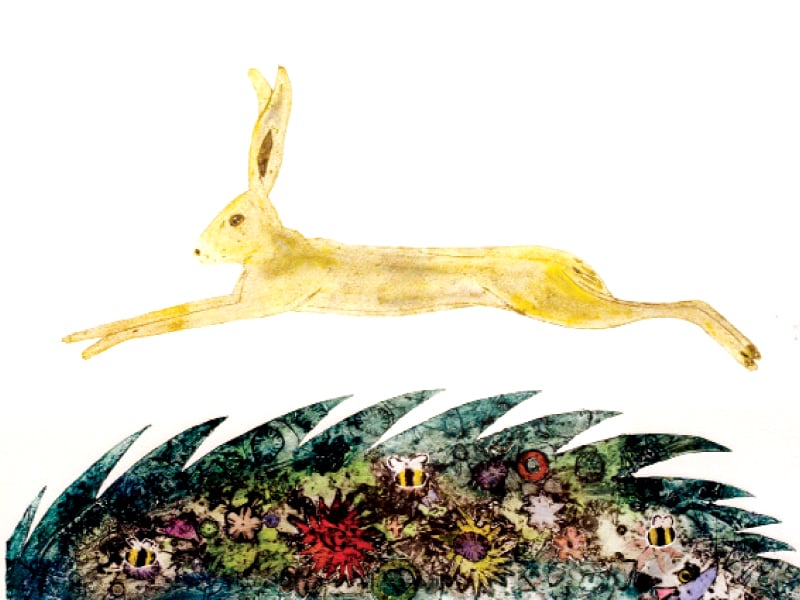
Over a decade into teaching the delicate craft of printmaking, artist and educator Zaira Ahmad Zaka felt something was amiss.
Much of her own trajectory of creative growth was defined through time spent exhibiting and working abroad, although in the absence of a residency program within Pakistan, the opportunity did not extend to foreign artists wishing to absorb the aesthetic nuance and pulsating landscape of Pakistan within their work.
It was this void that Zaka strived to fill early last year in establishing the Zaira Zaka Studio Residencies as a space designed to bring artists together in an organic exchange of creation, of technique and ideas. The cultivation of Zaka’s efforts was on display at the Satrang Gallery in Serena Hotel on Wednesday. Titled “Five Connect”, the show related the quintessence of collaborative art largely through the barter of techniques and cultural ideals, divergent only in subject matter and showcased the ten-day-long efforts of UK-based artists Rose Davies, Hannah Lawson, Kara Seaman and local talents, Muhammad Atif Khan and Zaka herself.
“During the exchange, we introduced the process of reduction monotype, a printmaking process linked to the French Impressionism of the 19th Century,” shared Rose Davies, whose work leans intrinsically towards traditional drawing, but through the patient and doting process of printmaking. According to Davies, the process was originally used by the well-known impressionists, Degas and Monet, though was forgotten for the better part of the artistic movements to follow, only to be rediscovered by an Indian researcher based in the United States.
Davies’ work engages a range of colours, though the artist uses red, yellow and blue, layering one upon the other as is traditionally done in the monotype process. Her imagery is localised and inspired by her visits to Pakistan, as if describing the people and space in a visual diary without any evident tendency.

A colleague of Davies’ at the Swansea Print Shop in Wales, Hannah Lawson’s work brushes upon some of the details absorbed during her visit to the Taxila Museum and the chaotic, narrow-lanes of Rawalpindi, though it does not limit itself. Kara Seaman’s work is a playful shift from the more rustic monotypes of Davies and Lawson and the illustrated animals in pastel colours come to life on the canvas, as if part of a vintage children’s storybook.
“It has been very exciting to be a part of this exchange,” shares Lawson, who is visiting Pakistan for the first time.
While Zaka’s work maintains a similar exploration of the monotype, depicting a silhouetted figure in dialogue with itself, and with the space with colours like a summer afternoon indoors, Muhammad Atif Khan’s miniature-esque breaks away from the technique, using exquisite detail to express playful but layered ideas. Unlike his colleagues, Khan’s work clings to the decadent symbols of fruit flies, ants and Mughal figures, typical of his well-known portfolio.
“The detail on Atif Khan’s work, especially in his pieces, “sweetheart” and “migration” is just incredible,” shared Zara Sajjid, Curator of the virtual gallery My Art World. “They look like miniature paintings from a distance until you peer closer and discover that they are etchings and digital prints.”
Prices range between Rs7,000 and Rs85,000 and the exhibit continues until May 10.
Published in The Express Tribune, April 17th, 2014.


1730803801-0/BeFunky-collage-(22)1730803801-0-165x106.webp)

1728377970-0/Menendez-Brothers-(1)1728377970-0-165x106.webp)

1730799445-0/Untitled-design-(52)1730799445-0-270x192.webp)
1730800230-0/Copy-of-Untitled-(5)1730800230-0-270x192.webp)







1730706072-0/Copy-of-Untitled-(2)1730706072-0-270x192.webp)
COMMENTS
Comments are moderated and generally will be posted if they are on-topic and not abusive.
For more information, please see our Comments FAQ